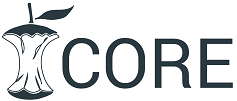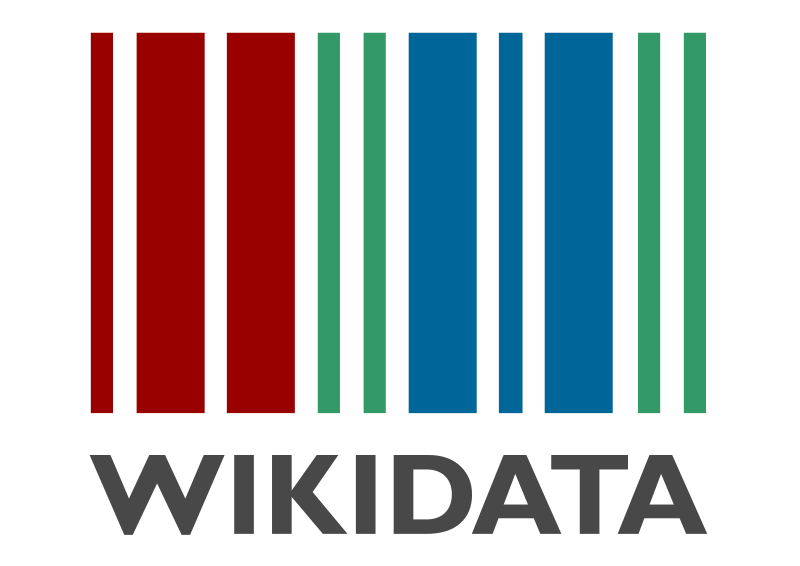The Obstacles in the Rational Decision-Making Process of Economic Actors: Cognitive Biases and Mental Shortcuts
Abstract
Rationality, which is known as one of the basic assumptions of classical economics, has become quite controversial in time, especially with the emergence of behavioral economics on the stage of history. With the cooperation of psychology, which became an established discipline towards the end of the 19th century, with economics, the need to determine the anomalies behind economic behavior arose. Behavioral economics, which is an interdisciplinary approach, has started to investigate the reasons that affect the reasoning process of people and prevent them from exhibiting rational behavior. Cognitive biases and mental shortcuts that we can talk about as a systemic error in the person's thought process; prevents the person from acting rationally. While applying to cognitive processes while in the decision stage, it will sometimes lead to erroneous results, even if it promises convenience and practicality.
The method of this study is a descriptive analysis, and behavioral anomalies that affect economic decision processes are tried to be explained. This study is a literature review, and in this sense, current theoretical and applied studies are presented and the reasons that push people to irrationality are explained. The aim of this study is the revealing of different behavioral anomalies that affect the thought process of people.
Metrics
References
Akkuş,T.(2019). Snob ve Veblen Etkisi. Tolga Akkuş: https://www.tolgaakkus.com/2019/04/snob-ve-veblen-etkisi-34-gun/ (adresinden 23 Aralık2022 de alındı)
Altman, M. (2012). Behavioral economics for dummies. Mississauga. John Wiley & Sons Canada Ltd.
Ariely, D. (2010). Akıl dışı ama öngörülebilir: kararlarımızı biçimlendiren gizli kuvvetler (A. H. Gür, & F. Şar, Çev.). Optimist Yayınları.
Arkes, H. R., & Ayton, P. (1999). The sunk cost and Concorde effects: Are humans less rational than lower animals?. Psychological bulletin, 125(5), 591. DOI: https://doi.org/10.1037/0033-2909.125.5.591
Arkes, H. R., & Blumer, C. (1985). The psychology of sunk cost. Organizational behavior and human decision processes, 35(1), 124-140. DOI: https://doi.org/10.1016/0749-5978(85)90049-4
Bagwell, L. S., & Bernheim, B. D. (1996). Veblen effects in a theory of conspicuous consumption. The American economic review, 86(3), 349-373.
Beşel, F. (2014). Kitap tanıtımı: akıldışı ama öngörülebilir, Dan Ariely. Siyaset, Ekonomi ve Yönetim Araştırmaları Dergisi, 2(2), 131-140.
Bilir, İ. (2021). Davranışsal iktisat çerçevesinde tüketici davranışlarının incelenmesi: Adıyaman ili örneği [Yayınlanmamış yüksek lisans tezi]. Adıyaman Üniversitesi, Adıyaman.
Brunnermeier, M. K., & Julliard, C. (2008). Money illusion and housing frenzies. The Review of Financial Studies, 21(1), 135-180. DOI: https://doi.org/10.1093/rfs/hhm043
C.Cooper, A., Woo, C., & Dunkelberg, W. (1988). Entrepreneurs' perceived chances for success. Journal of Business Venturing, 3(2), 97-108. DOI: https://doi.org/10.1016/0883-9026(88)90020-1
Cevizli, İ. (2021). İktisatta rasyonel birey analizi: davranışsal iktisat ekseninde bir deneysel çalışma [Yayınlanmamış doktora tezi]. Sakarya Üniversitesi, Sakarya.
CFI. (2021, Şubat 10). Veblen Good. Corporate Finance Institute: https://corporatefinanceinstitute.com/resources/economics/veblen-good/ adresinden alındı
CFI. (2022, Ekim 23). Bandwagon Effect. Corporate Finance Institute: https://corporatefinanceinstitute.com/resources/wealth-management/bandwagon-effect/ adresinden alındı
Chen, G., Kim, K. A., Nofsinger, J. R., & Rui, O. M. (2007). Trading performance, disposition effect, overconfidence, representativeness bias, and experience of emerging market investors. Journal of behavioral decision making, 20(4), 425-451. DOI: https://doi.org/10.1002/bdm.561
Choi, J. J., Laibson, D., Madrian, B. C., & Metrick, A. (2004). For better or for worse: Default effects and 401 (k) savings behavior. In Perspectives on the Economics of Aging (pp. 81-126). University of Chicago Press. DOI: https://doi.org/10.7208/chicago/9780226903286.003.0003
Çalık, Ü., & Düzü, G. (2009). İktisat ve psikoloji. Akademik Bakış Uluslararası Hakemli Sosyal Bilimler E-Dergisi, (18).
Çavuşoğlu, R. İ. (2019). Davranışsal ekonomi alanında yayınlanan uluslararası makalelerin içerik analizi [Yayınlanmamış yüksek lisans tezi]. Marmara Üniversitesi, İstanbul.
Çetintürk, K. (2020). Davranışsal iktisat perspektifinden tüketim harcamalarında sosyal medyanın etkisi: y ve z kuşakları üzerine bir analiz [Yayınlanmamış yüksek lisans tezi]. Manisa Celal Bayar Üniversitesi, Manisa.
Demir, Ö. (2018). Akıl ve çıkar: davranışsal iktisat açısından rasyonel olmanın rasyonelliği (2 b.). Sentez Yayıncılık.
Doru, F. (2020). Davranışsal iktisat ve çıpalama üzerine bir inceleme [Yayınlanmamış yüksek lisans tezi]. Aydın Adnan Menderes Üniversitesi, Aydın.
Druckman, J. N. (2001). Evaluating framing effects. Journal of economic psychology, 22(1), 91-101. DOI: https://doi.org/10.1016/S0167-4870(00)00032-5
Dubois, B., & Duquesne, P. (1993). The market for luxury goods: ıncome versus culture. European Journal of Marketing, 27(1), 35-44. DOI: https://doi.org/10.1108/03090569310024530
Erkan, B. (2016). Ana akım (ortodoks-neoklasik) iktisat öğretisi eleştirisi: heteredoks yaklaşım ihtiyacı. Akademik Araştırmalar ve Çalışmalar Dergisi (AKAD), 8(14), 25-40. DOI: https://doi.org/10.20990/kilisiibfakademik.264352
Eğilmez, M. (2020, 25 Eylül). Tüketim, gösteriş tüketimi, züppe etkisi, veblen etkisi ve sürü etkisi. Kendime yazılar. https://www.mahfiegilmez.com/2020/09/tuketim-gosteris-tuketimi-zuppe-etkisi.html adresinden alındı
Fernandez, R., & Rodrik, D. (1991). Resistance to reform: Status quo bias in the presence of individual-specific uncertainty. The American economic review, 1146-1155.
Furnham, A., & Boo, H. C. (2011). A literature review of the anchoring effect. The journal of socio-economics, 40(1), 35-42. DOI: https://doi.org/10.1016/j.socec.2010.10.008
Gonzalez, C., Dana, J., Koshino, H., & Just, M. (2005). The framing effect and risky decisions: Examining cognitive functions with fMRI. Journal of economic psychology, 26(1), 1-20. DOI: https://doi.org/10.1016/j.joep.2004.08.004
Jullien, D. (2016). All frames created equal are not identical: On the structure of kahneman and tversky’s framing effects. Œconomia. History, Methodology, Philosophy, (6-2), 265-291. DOI: https://doi.org/10.4000/oeconomia.2364
Kahneman, D. (2018). Hızlı ve yavaş düşünme. Varlık Yayınları.
Kahneman, D., & Jacowitz, K. (1995). Measures of anchoring in estimation tasks. Personality and Social Psychology Bulletin, 21(11), 1161-1166. DOI: https://doi.org/10.1177/01461672952111004
Kahneman, D., Knetsch, J. L., & Thaler, R. H. (1990). Experimental tests of the endowment effect and the Coase theorem. Journal of political Economy, 98(6), 1325-1348. DOI: https://doi.org/10.1086/261737
Kahneman, D., Knetsch, J. L., & Thaler, R. H. (1991). Anomalies: The endowment effect, loss aversion, and status quo bias. Journal of Economic perspectives, 5(1), 193-206. DOI: https://doi.org/10.1257/jep.5.1.193
Kahneman, D., Lovallo, D., & Sibony, O. (2011). Before you make that big decision. Harvard Business Review, 89(6), 50-60.
Kahneman, D., & Tversky, A. (1973). Judgement under uncertainty: heuristics and biases. Science, 185(4157), 1124-1131. DOI: https://doi.org/10.1126/science.185.4157.1124
Kahneman, D., & Tversky, A. (1979). Prospect theory: an analysis of decision under risk. Econometrica, 47(2), 263-292. DOI: https://doi.org/10.2307/1914185
Kahneman, D., & Tversky, A. (1983). Choices, values and frames. American Psychologist, 39(4), 341-350. DOI: https://doi.org/10.1037/0003-066X.39.4.341
Kahneman, D., & Tversky, A. (1986). Rational choice and the framing of decisions. The Journal of Business, 59(4), 251-278. DOI: https://doi.org/10.1086/296365
Kamber, S. C. (2018). Davranışsal iktisat ve rasyonellik varsayımı: literatür incelemesi. Ekonomi ve Yönetim Araştırmaları Dergisi, 7(1), 168-199.
Kamilçelebi, H. (2019). Davranışsal iktisat. IJOPEC Publication.
Kurt, M. (2019). Tüketici davranışlarının davranışsal iktisat açısından açıklanması: batman üniversitesi örneği [Yayınlanmamış yüksek lisans tezi]. Batman Üniversitesi, Batman.
Küçüksucu, M., Konya, S., & Karaçor, Z. (2017). Davranışsal iktisat ekseninde iktisatta psikolojik arka plan. In ICPESS (International Congress on Politic, Economic and Social Studies) (2), 253-283.
Laibson, D. (1997). Golden eggs and hyperbolic discounting. The Quarterly Journal of Economics, 112(2), 443-478. DOI: https://doi.org/10.1162/003355397555253
Leibenstein, H. (1950). Bandwagon, snob, and veblen effects in the theory of consumers' demand. The Quarterly Journal of Economics, 64(2), 183-207. DOI: https://doi.org/10.2307/1882692
Marzilli Ericson, K. M., & Fuster, A. (2014). The endowment effect. Annu. Rev. Econ., 6(1), 555-579. DOI: https://doi.org/10.1146/annurev-economics-080213-041320
Morris, E. (2010, Haziran 20). The Anosognosic’s Dilemma: Something’s Wrong but You’ll Never Know What It Is (Part 1). The New York Times: https://web.archive.org/web/20100622102350/https://opinionator.blogs.nytimes.com/2010/06/20/the-anosognosics-dilemma-1/#ftn3 adresinden alındı
O'Donoghue, T., & Somerville, J. (2018). Modeling risk aversion in economics. Journal of Economic Perspectives, 32(2), 91-114. DOI: https://doi.org/10.1257/jep.32.2.91
Pettibone, J. C., & Wedell, D. H. (2000). Examining models of nondominated decoy effects across judgment and choice. Organizational behavior and human decision processes, 81(2), 300-328. DOI: https://doi.org/10.1006/obhd.1999.2880
Rabin, M., & Thaler, R. H. (2001). Anomalies: risk aversion. Journal of Economic perspectives, 15(1), 219-232. DOI: https://doi.org/10.1257/jep.15.1.219
Rajagopal, P., & Rha, J. Y. (2009). The mental accounting of time. Journal of Economic Psychology, 30(5), 772-781. DOI: https://doi.org/10.1016/j.joep.2009.06.008
Rubinstein, A. (2003). “Economics and psychology”? The case of hyperbolic discounting. International Economic Review, 44(4), 1207-1216. DOI: https://doi.org/10.1111/1468-2354.t01-1-00106
Samuelson, W., & Zeckhauser, R. (1988). Status quo bias in decision making. Journal of Risk and Uncertainty, 1(1), 7-59. DOI: https://doi.org/10.1007/BF00055564
Schmidt, U., & Traub, S. (2002). An experimental test of loss aversion. Journal of risk and Uncertainty, 25, 233-249. DOI: https://doi.org/10.1023/A:1020923921649
Schoemaker, P. J. (1982). The expected utility model: Its variants, purposes, evidence and limitations. Journal of economic literature, 529-563.
Shafir, E., Diamond, P., & Tversky, A. (1997). Money ıllusion. The Quarterly Journal of Economics, 112(2), 341–374. DOI: https://doi.org/10.1162/003355397555208
Shampanier, K., Mazar, N., & Ariely, D. (2007). Zero as a special price: The true value of free products. Marketing science, 26(6), 742-757. DOI: https://doi.org/10.1287/mksc.1060.0254
Simon, H. A. (1955). A behavioral model of rational choice. The quarterly journal of economics, 99-118. DOI: https://doi.org/10.2307/1884852
Solak, T. (2019). Davranışsal iktisat ve bireylerin karar verme sürecinde ortaya çıkan gizli tuzaklar üzerine bir inceleme [Yayınlanmamış yüksek lisans tezi]. Aydın Adnan Menderes Üniversitesi, Aydın.
T.C. Ekonomi Bakanlığı. (2018). Senin Kararın mı? Kamu Politikası Tasarımında Davranışsal Yaklaşım.
TDK. (2022, 11 22). Çıpa. Türk Dil Kurumu Sözlükleri: https://sozluk.gov.tr/ adresinden alındı
TDK. (2022, Kasım 21). Statüko. Türk Dil Kurumu Sözlükleri: https://sozluk.gov.tr/ adresinden alındı
Tepeler, M. İ. (2017). Davranışsal iktisat bağlamında karar vericilerin risk davranışlarının deneysel analizi [Yayınlanmamış yüksek lisans tezi]. Erzurum Teknik Üniversitesi, Erzurum.
Thaler, R. (1981). Some empirical evidence on dynamic ınconsistency. Economics Letters, 8(3), 201-207. DOI: https://doi.org/10.1016/0165-1765(81)90067-7
Thaler, R. (1985). Mental accounting and consumer choice. Marketing Science, 4(3), 199-214. DOI: https://doi.org/10.1287/mksc.4.3.199
Thaler, R. (1999). Mental accounting matters. Journal of Behavioral Decision Making, 12(3), 183-206. DOI: https://doi.org/10.1002/(SICI)1099-0771(199909)12:3<183::AID-BDM318>3.0.CO;2-F
Thaler, R., & Sunstein, C. (2013). Dürtme. Pegasus Yayınları.
Tüzel, M. F. (2019). Davranışsal iktisat perspektifinden enflasyonist ortamda tüketici davranışları [Yayınlanmamış yüksek lisans tezi]. Afyon Kocatepe Üniversitesi, Afyonkarahisar.
Uzgoren, E., & Guney, T. (2012). The snob effect in the consumption of luxury goods. Procedia - Social and Behavioral Sciences, 62, 628 – 637. DOI: https://doi.org/10.1016/j.sbspro.2012.09.105
Vigneron, F., & Johnson, L. (1999). A review and a conceptual framework of prestige-seeking consumer behavior. Academy of Marketing Science Review, (1), 1-15.
Wikipedia. (2022, Kasım 28). Bandwagon Effect. Wikipedia: https://en.wikipedia.org/wiki/Bandwagon_effect adresinden alındı
Wilson, T. D., Houston, C. E., Etling, K. M., & Brekke, N. (1996). A new look at anchoring effects: basic anchoring and its antecedents. Journal of Experimental Psychology: General, 125(4), 387. DOI: https://doi.org/10.1037/0096-3445.125.4.387
Yiğit, A. G., & Yiğit, M. (2019). Davranışsal iktisat çerçevesinde sınırlı rasyonalite: tüketici tercihlerinde algı yanılgısı üzerine bir deney. AVRASYA Uluslararası Araştırmalar Dergisi, 7(16), 19-34. DOI: https://doi.org/10.33692/avrasyad.543719






















